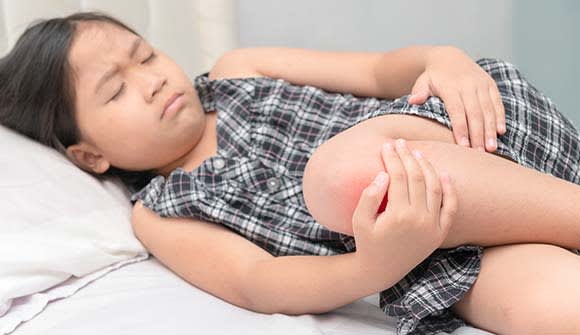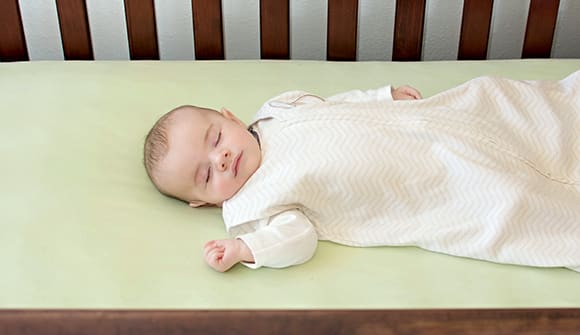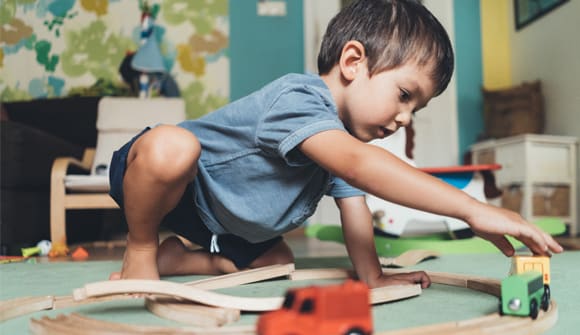Arthritis in kids?
When joint pain persists in little ones.
Article Date:

You may think about arthritis as an older person’s disease, but it can affect children.
According to the Arthritis Foundation, juvenile arthritis (JA), also known as pediatric rheumatic disease, affects about 300,000 kids and teens 16 and under in the United States.
Tender joints
In most JA cases, children experience joint inflammation, swelling, pain and tenderness, but some types have few or no symptoms, or only affect the skin and internal organs.
“Joint pain is the most common symptom reported by my patients. Those who are able to describe the feeling a little more will state some stiffness or trouble with movements of the involved joint,” said Sharlene Williams-Velez, DPT, a physical therapist at Wolfson Children's Rehabilitation in Mandarin. “The affected areas can also feel warm, and there may be some swelling.”
Is it JA?
Before a diagnosis is made by a pediatric rheumatologist, providers will take a detailed medical history and do testing such as blood work and imaging.
“If your child had a recent illness or infection, is complaining of pain or stiffness, and no longer wants to participate in activities they previously enjoyed, you’ll want to visit your pediatrician. Your will doctor will direct you on the next course of action depending on what he or she finds,” Williams-Velez said.
Cause and cure
The exact causes of JA are unknown, but researchers believe certain genes may contribute when activated by a virus, bacteria or other external factors, according to the Arthritis Foundation.
“Most of the patients I’ve seen have had an illness or infection that led to an autoimmune response of increased inflammation in one or multiple joints,” Williams-Velez said.
There is no cure for JA, but remission (little or no symptoms) can be achieved with early diagnosis and aggressive care.
Therapy relief
Treatment involves medication and physical therapy to ensure decreased inflammation and increased strength, endurance, flexibility and balance so children can continue to be kids, Williams-Velez explained. “Every case is different, but the goal is to gain as much functional independence as possible so these kids can participate in recreational activities and transition to a healthy adulthood.”
For outpatient physical therapy treatment, the focus is strength and flexibility with a small amount of non-impact endurance.
“Making sure the muscles near the affected joints have the appropriate length is very important, otherwise they start to pull unevenly, leading to pain and increased inflammation,” Williams-Velez said.
Strength is important for good support throughout daily tasks and in recreational or sporting activities.
“I always make sure they have great core stability as well as adequate strength to the surrounding muscles of the affected joints,” Williams-Velez added.
Field play
Fortunately, children with arthritis can still move, play and compete.
“Kids diagnosed with arthritis can live an active lifestyle. There might be some modifications of the activities they participate in, but being active will keep all the muscles strong and joints mobile,” Williams-Velez said. “I always recommend swimming since it’s a full-body exercise and is low-impact on the joints. However, I’ve had patients who wanted to play soccer, and with conditioning and teamwork from their coaches and parents, they could reach their goal. The patients I treat with JA do a great job with physical therapy and work very hard to be as strong as they can be.”
To learn more about how Wolfson Children’s Rehabilitation can help with your child’s joint pain or stiffness, call 904.202.4200.



